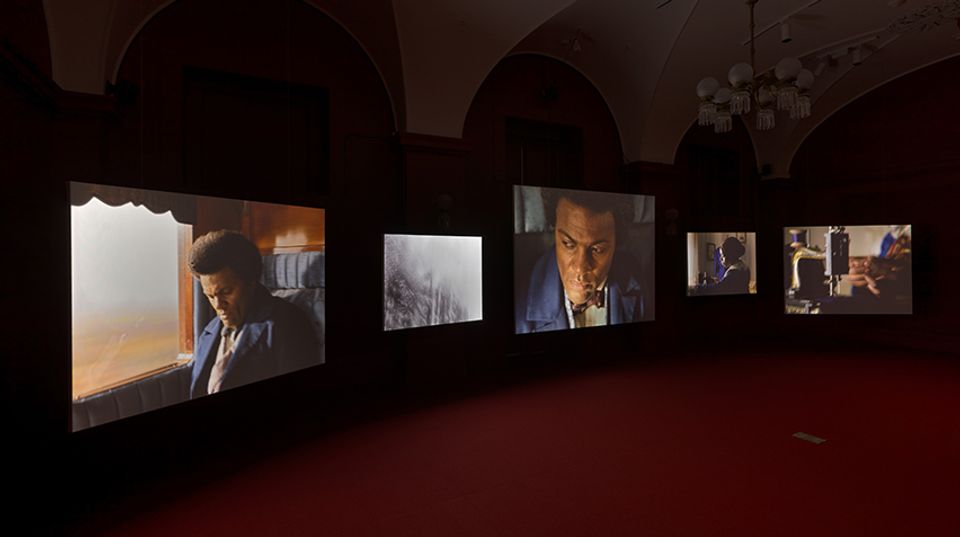
Nancy's Donated Trophy

The other night, my friend Nancy was heading over to American Art to see the Jean Shin exhibition that had just opened. Last year she had answered Shin's call for trophies from local residents. (I heard Shin got more than 2000.) That evening, Nancy was going to a reception for those who contributed. I had been drafting some notes for a post about Shin, so when Nancy asked if I wanted to go, I said, "Yes, I'm coming with you."
The trophies are part of the artwork specially commissioned by the museum, Everyday Monuments, which is part of the larger exhibition Common Threads. When Nancy and I got to the gallery, I went to introduce her to Shin (whom I had met a few days earlier). But I realized that they had already met through the donation process. Nancy contributed her family's trophies, and Shin accepted them, learning their significance, and recasting them for her artwork. At her Brooklyn studio, Shin removed the sports equipment from the trophies, but left the figures' original stances intact: athletic, knees bent, and ready to spring. Shin hand-cast replacement props that celebrate the everyday: typewriters, strollers, irons, lawnmowers, etc. The trophies now pay tribute to activities we tend to overlook in our busy lives.
Nancy's husband, who was a black belt in Tae Kwon Do, passed away a few years ago. She decided to donate a few of his trophies to Shin after clearing it with her daughters. Both daughters gave their approval, but only Annie donated trophies of her own—five for soccer. "That's me right here," Nancy says when we walk over to Everyday Monuments. One of her husband's trophies is among the tallest in the exhibition, so it was easy to locate. "I wrote my husband's name and life dates on each piece. Knowing that it's going toward art and that other people will see it and enjoy it, he'd think was very cool. It's great to have it go to a good place." The martial arts expert at the pinnacle of the 1996 trophy is now shown vacuuming. I asked Nancy how she felt about that. "One of my memories of him is vacuuming and bumping into our daughter's crib. Annie slept right through it. I think what Shin has done is appropriate and a great way to memorialize him."
For Shin, the art of storytelling is synonymous with the storytelling of art.
On June 25, 6:00 pm, Joanna Marsh, the James Dicke Curator of Contemporary Art, will lead a tour of the exhibition.
On July 7, 6:00 pm, Jean Shin and curator Joanna Marsh sit down to discuss the challenges of preserving ephemeral materials with conservator Hugh Shockey.

















